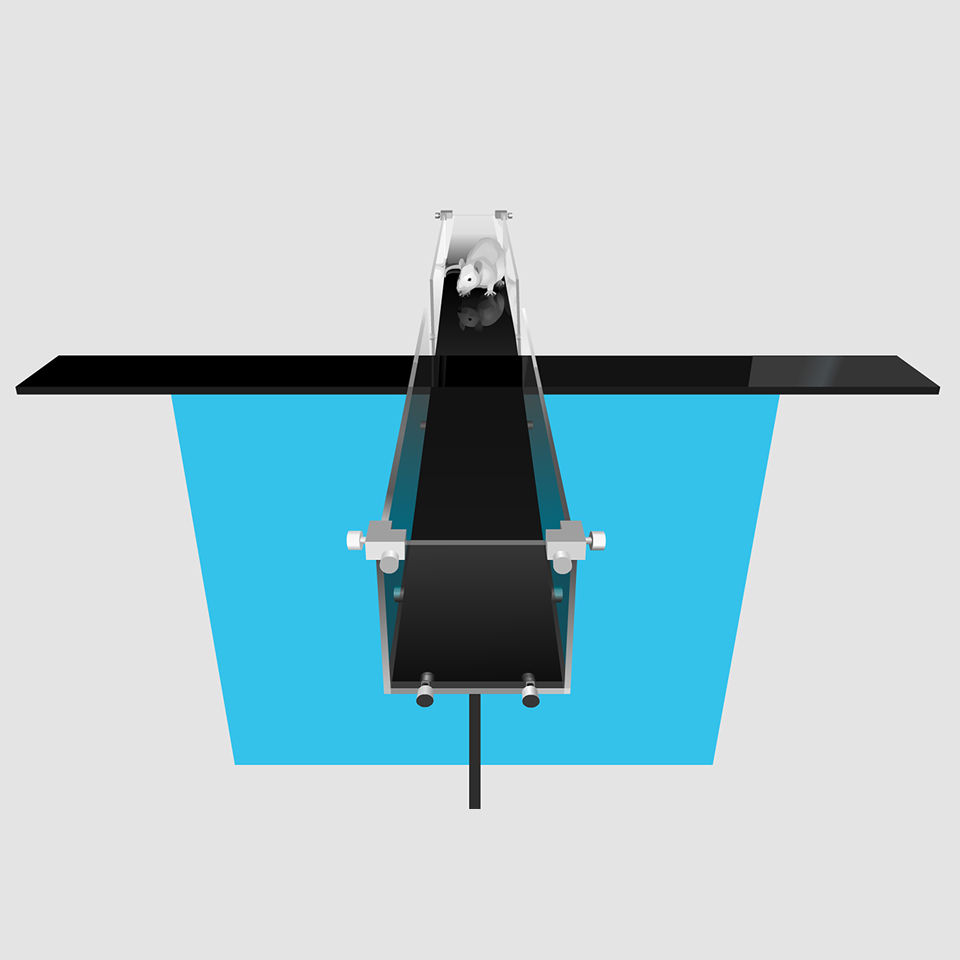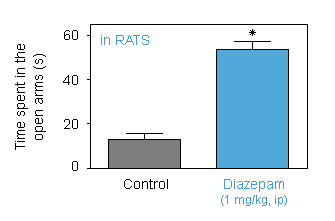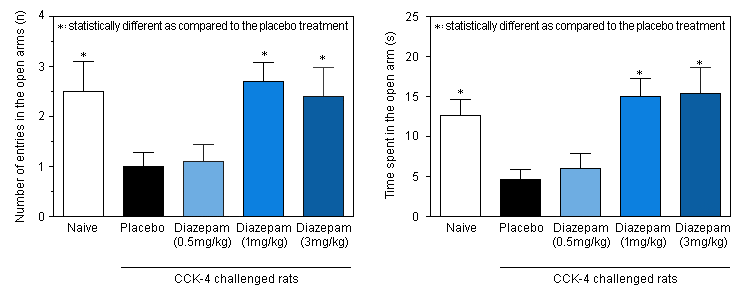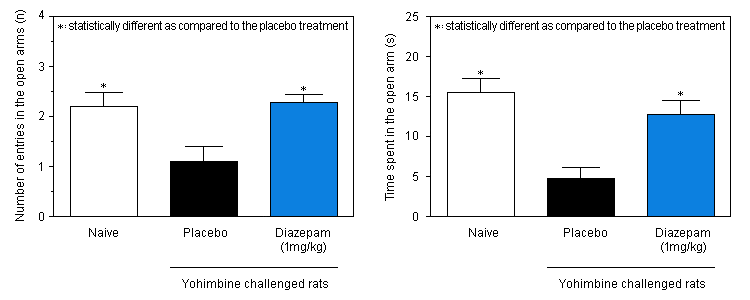Elevated Plus Maze in rodents
-

-
Presentation
- The Elevated Plus Maze (EPM) test is used to evaluate the relative anxiety status of mice or rats.
The EPM situation rests on the conflict between the innate tendencies of rodents to explore novel environments and avoid open and brightly lit areas. In this task the animal is placed in the centre of the maze. From here it can walk down any of four runways. Two of the arms are well lit and open, and the other two are enclosed and dimly lit. Mice and rats prefer the closed arms but will venture out into the open arms. The amount of time spent in the open arms is recorded. "Anxious" mice or rats will spend little time in the open arms and make very few entries into the open arms. Anxiolytic drugs such as benzodiazepines increase the time spent in the open arms and increase the number of open arm entries in this test.
- The Elevated Plus Maze (EPM) test is used to evaluate the relative anxiety status of mice or rats.
-
Compound testing
Compound testing addresses the effect of acute treatment on the total duration of time spent in the open arms. Investigation of the effect of subchronic treatment is also possible.
-
Endpoints

Time spent in the open arms (s) 
Number of entries in the open arms
-
MICE: 1 mg/kg diazepam induces a significant increase in the time spent in the open arms. -
RATS: 1 mg/kg diazepam induces a significant increase in the time spent in the open arms.
Panic anxiety model is performed in the rat and has been validated using the EPM. In line with the clinical finding, benzodiazepines normalize the panic anxiety status of rats challenged with CCK-4 or with Yohimbine. |
-
RATS: Number of entries and time spent in the open arms
You could also be interested in
-
Marble burying
Mice bury glass marbles that are present in the cage. This test has some predictive value for anti-depressant and/or anxiolytic drugs.
Light-Dark
The light dark test is used to evaluate the relative anxiety status of mice.
-
Spontaneous paradigm
Spontaneous paradigm is based on the natural reaction of rodents to stress stimuli.
Panic anxiety
Anxiety can be defined as a response to threats that causes nervousness and fear.

 SPONTANEOUS PARADIGM
SPONTANEOUS PARADIGM


